Rambutan vs Lychee - Rambutan and lychee are two tropical fruits often compared for their similar appearances and taste profiles. In this article, we’ll explore their similarities and differences, covering their appearance, taste, and culinary uses.
Jump to Section
Rambutan vs Lychee: What’s the difference?
While both fruits originate from Southeast Asia, they offer distinct characteristics that can make it easy to distinguish one from the other. The outer skins of these fruits are the most apparent difference, as rambutan has a red exterior with long, flexible hairs, while lychee features a pinkish-red shell with small, scaly bumps. Their sizes differ as well, with lychee being approximately half the size of the golf ball-sized rambutan.
When it comes to taste, rambutan has a sweet and creamy flavor that sets it apart from lychee, which has a more sweet and tart taste, often likened to that of a red grape. Both fruits feature white, juicy flesh and are enjoyed for their refreshing qualities in hot tropical climates.
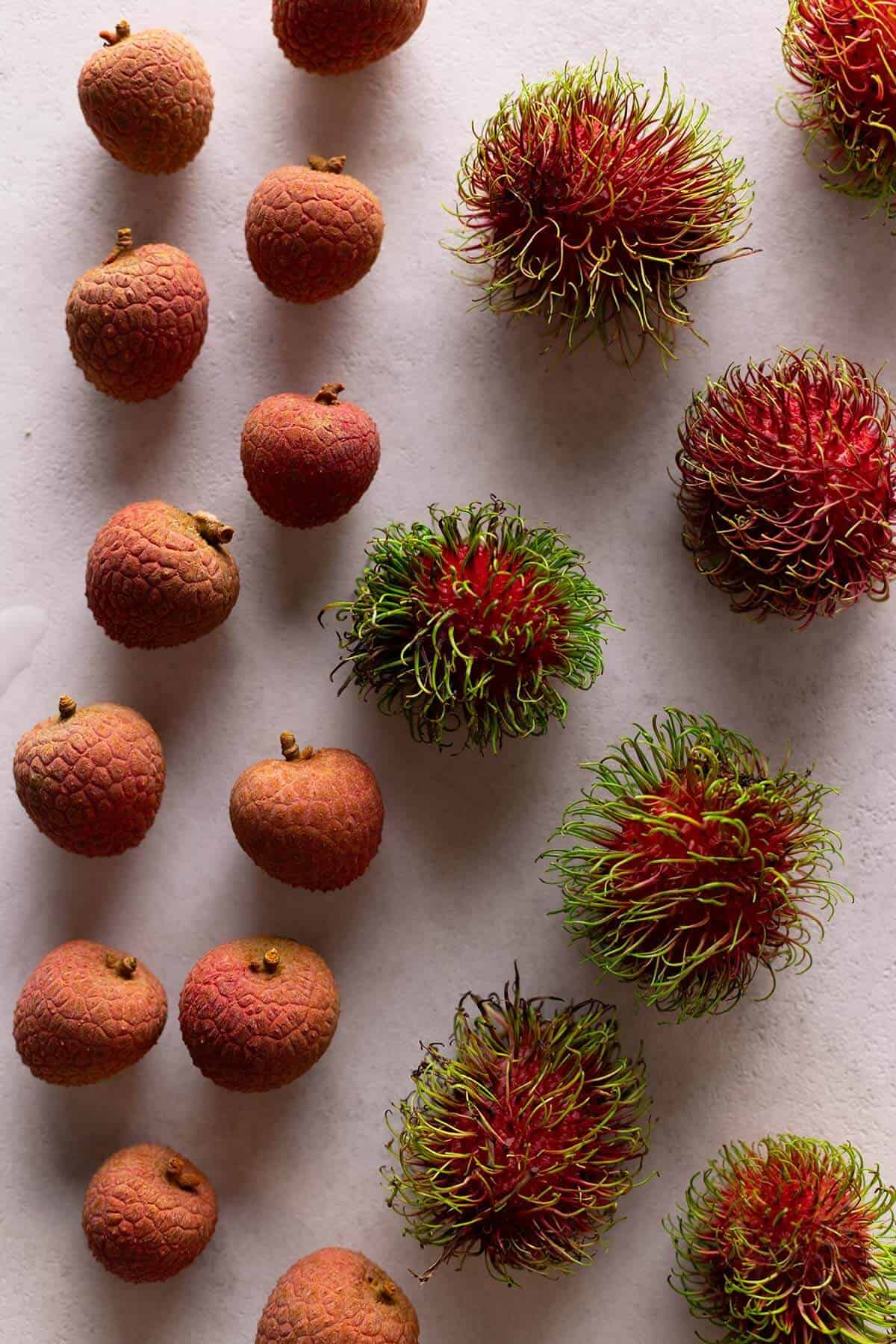
Origins and Distribution
Rambutan and lychee are both tropical fruits belonging to the Soapberry family (Sapindaceae). Both fruits have similar origins and distribution patterns in Asia.
Rambutan, native to Southeast Asia, originates from countries such as Malaysia, Indonesia, and Thailand. In the 13th to 15th centuries, Arab traders introduced the fruit to East Africa, specifically to Zanzibar and Pemba. Later, in the 19th century, the Dutch brought rambutans from Indonesia to Suriname in South America. Today, rambutan is also cultivated in other regions, including India, Hawaii, and Australia.
Lychee has its roots in Southern China and was first cultivated in the Guangdong and Fujian provinces. Eventually, the fruit reached Southeast Asia and India, and records of lychee cultivation date as far back as the Tang Dynasty. The lychee tree, also known as Litchi chinensis, thrives in subtropical regions extending beyond China and can now be found in countries like Thailand, Malaysia, and even Hawaii.
Physical Appearance
Although rambutan and lychee may look quite similar, there are differences in their external appearance.
The rambutan is a round fruit, approximately the size of a golf ball. Its most distinguishing feature is its red outer skin covered in hair-like prongs, which are colored somewhere between neon green and orange. These flexible, electric hairs give the rambutan a unique and eye-catching appearance.
On the other hand, the lychee is slightly smaller than the rambutan. Its outer layer is also red, but instead of hairy prongs, it has small scaly bumps. The lychee's external peel resembles the texture of a lizard's skin, which sets it apart from the rambutan.
Both fruits have smooth, white, juicy flesh and an inner seed, however, the texture of the rambutan’s flesh is firmer and slightly less juicy than the lychee.
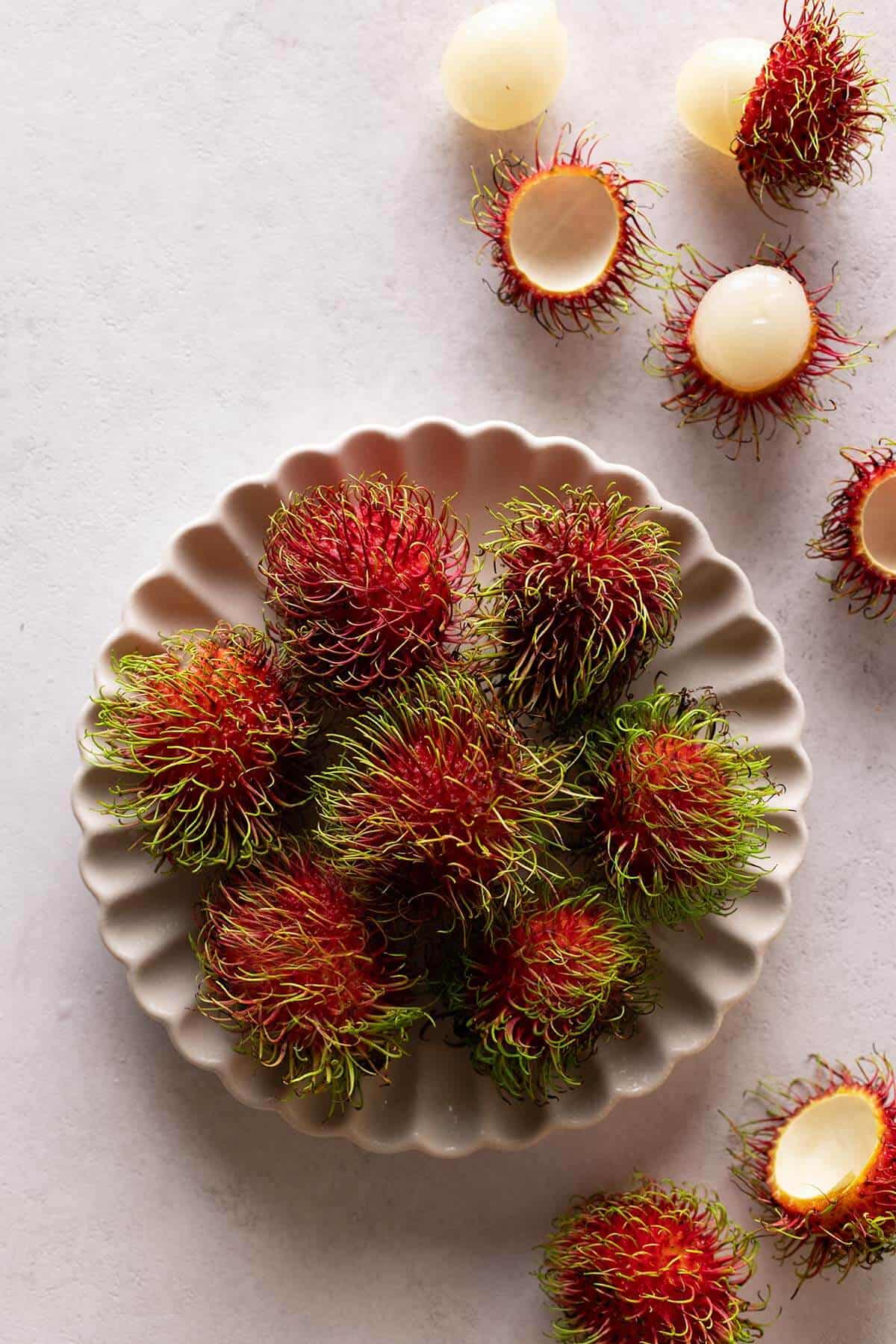
Taste and Flavor
Rambutan and lychee are both tropical fruits that offer unique flavors and textures. While each fruit has a distinct taste, they do share some similarities.
Rambutan has a sweet and creamy taste, often compared to dragon fruit. Its flavor is rich, with a hint of floral notes that make it appealing to many palates. The white flesh of the rambutan is juicy and tender, contributing to its enjoyable eating experience. Learn more about rambutan and how to eat it here. https://foodtasia.com/rambutan/
On the other hand, lychee offers a sweet and tart taste, with some people comparing the flavor to that of a red grape. Lychee is known for its bright and refreshing characteristics, which make it an ideal fruit to enjoy on a warm day. The crisp texture of lychee's white flesh is similar to watermelon, further enhancing its refreshing qualities.
In terms of floral taste, lychee is often considered to have more pronounced floral notes than rambutan. These notes complement the fruit's overall sweetness and contribute to its unique flavor profile. While rambutan also contains floral undertones, they are more subtle and blend seamlessly with the fruit's creaminess.
Rambutan showcases a sweet and creamy flavor, while lychees offer a sweet and slightly sour taste, similar to red grapes. This contrast in flavors contributes to the unique experience each fruit provides, making them even more intriguing for those who enjoy trying new exotic produce.
Culinary Uses and Recipes
Rambutan and lychee are popular choices when it comes to adding an exotic touch to various dishes and beverages. Both fruits offer unique flavors and textures, making them suitable for a range of recipes in Asian cuisine and beyond.
How to Eat and Prepare
Rambutan's taste is often described as sweet and slightly tangy, with a texture similar to a grape. To enjoy rambutan, use a sharp knife to cut a small slit in the skin and gently peel it away, revealing the fruit's tender flesh. Lychee, on the other hand, has a delicately sweet flavor and also a texture that resembles a peeled grape. To prepare lychee, crack the shell open with your fingers or a knife and remove the outer layer to expose the fruit. Both fruits have an inedible seed in the center, so be sure to discard it before consuming.
These exotic fruits can be incorporated into a variety of dishes, such as fruit salads, smoothies, and desserts. Rambutan and lychee are also common ingredients in Asian cuisine; they can be found in dishes like stir-fries, salads, and rice dishes.
Drinks and beverages
Rambutan and lychee are both versatile additions to beverages, juices, and other drinks. They can be used to balance the sweetness and acidity in beverages. The exotic flavors of these fruits make them ideal for creating unique beverages and mocktails, such as a lychee soda or a rambutan-infused mojito. Their subtle, flexible taste that makes it relatively easy to mix them with other tropical fruits such as pear, banana, mango.
Lychee juice and syrups are also available for incorporating the fruit's flavor into drinks such as Boba teas, which often include lychee as one of the flavor options.
Desserts and Sweets
Rambutan and lychee have become popular ingredients in various desserts and sweets around the world. Their unique taste profiles add an exotic touch to classic dishes like fruit salads, cakes, and tarts. They are frequently used in creating frozen treats such as sorbet, ice cream, and frozen yogurt.
Aside from their use in traditional desserts, the fruits can also be found in unconventional sweets like decorative dragon fruit bowls or boba tea with lychee-flavored bubbles. These exotic fruit desserts not only look visually appealing but also deliver a burst of flavor, making them an exciting choice for any sweet tooth.
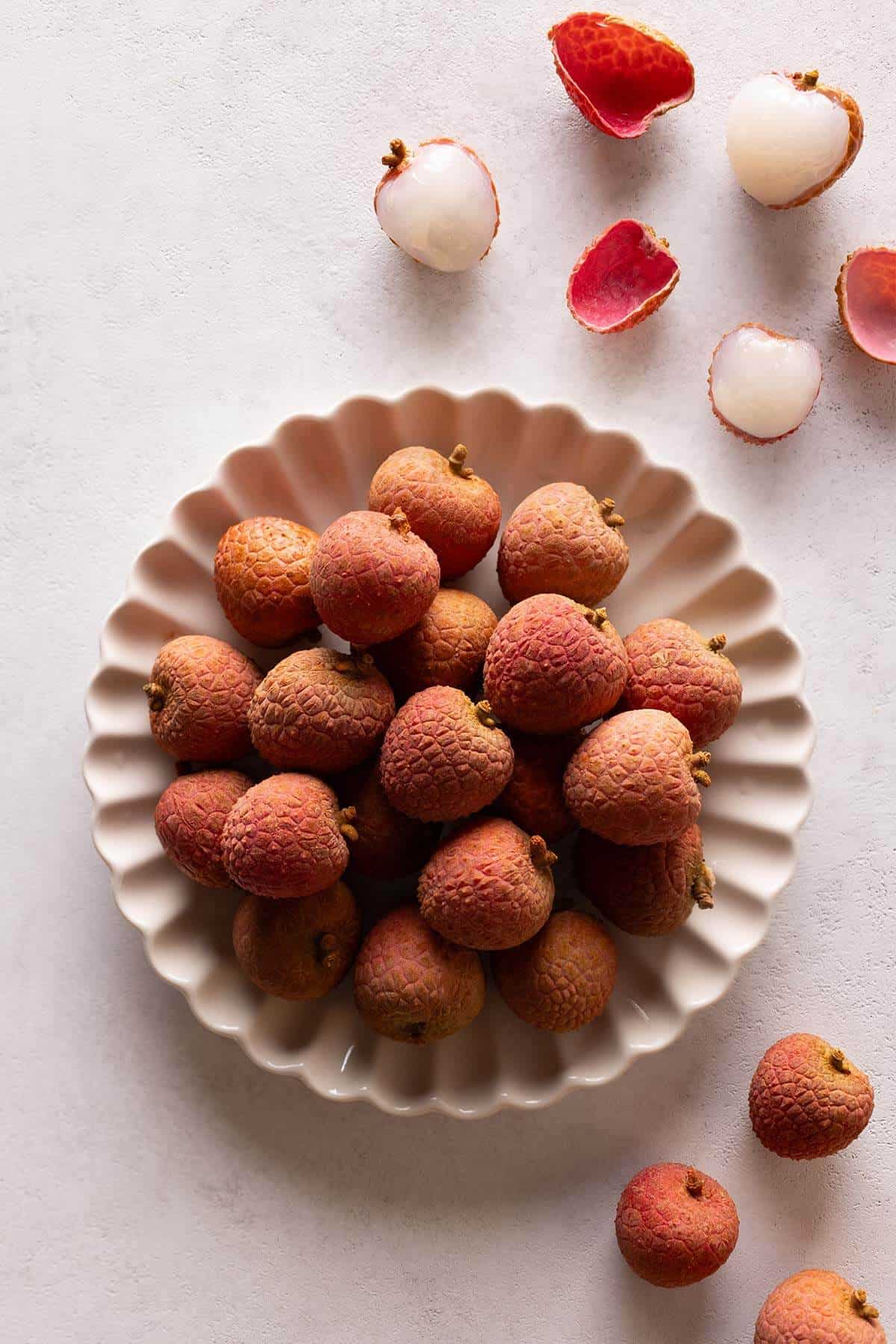
Propagation and Cultivation
Tropical and Subtropical Climates
Both rambutan and lychee trees thrive in tropical and subtropical regions. These fruit trees require a warm, humid climate to grow and produce fruit. They can be sensitive to temperature fluctuations, especially frost, which can damage or kill the trees.
Lychee Tree
Lychee trees are predominantly propagated by seeds or air layering. They prefer well-drained soils and perform best in slightly acidic soils with a pH of around 6 to 7. Lychees need a mildly cool, dry period during winter, followed by a warm and humid growing season to produce fruit. They are grown commercially in many subtropical areas such as Australia, Brazil, southeast China, India, Indonesia, Israel, Madagascar, Malaysia, Mauritius, Mynamar, Pakistan, South Africa, Taiwan, Thailand, Vietnam, parts of Europe, and in North America in Mexico and the US (Florida, Hawaii, and California)
Rambutan Tree
Rambutan trees, on the other hand, can be propagated through seedling and vegetative propagation. They grow well on hilly terrain and prefer deep, clay loam or rich sandy loam soil that contains rich organic matter and well-draining capabilities.
Rambutan trees require a tropical climate without a pronounced dry season and plenty of rainfall to grow optimally. The fruit originated in the Malaysian−Indonesian region and shares a close relationship with lychee and longan in the Sapindaceae family. It is also currently grown in Central America.
Lychee vs Rambutan vs Longan: Another similar fruit
Longan is another exotic fruit like lychee and rambutan. Longan is native to Southeast Asia, particularly prevalent in countries such as Vietnam, Thailand, and China. This small, round fruit is related to the lychee and is known for its juicy, white flesh and distinctive yellow-brown skin. The longan, often referred to as the "dragon's eye" due to its appearance, has been consumed and appreciated for centuries in Asia. Learn more about Longan and how to eat it here.
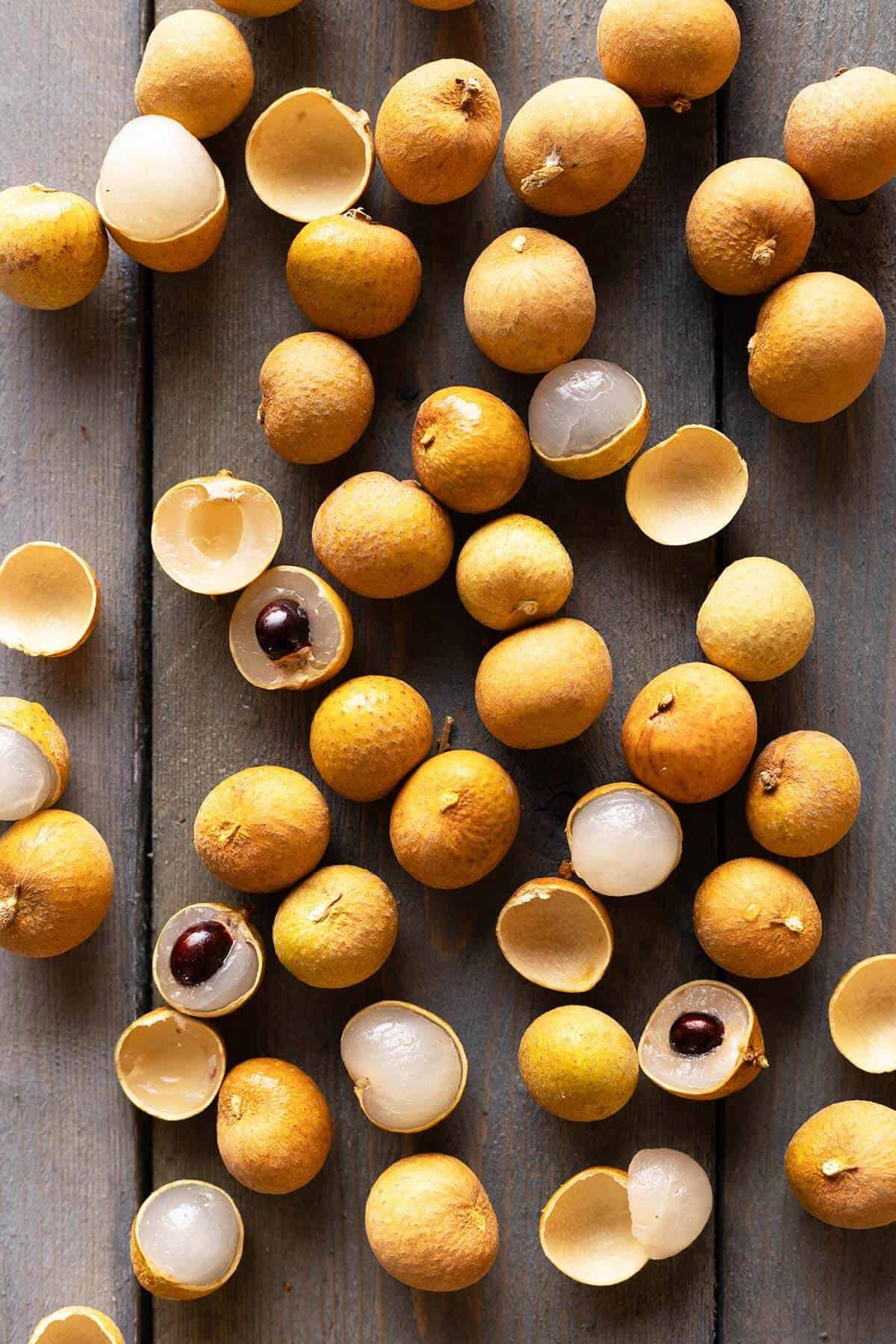
Frequently Asked Questions
How do you pronounce lychee?
In American English, it is most common to hear lychee pronounced as Lee-chee. In British English, Lie-chee, is the most common way that lychee is pronounced. The third pronunciation of lychee, Lit-chee, is less common than the previous two and derives from the Latin name for the species, Litchi Chinensis.
How do rambutan and lychee differ in taste?
Rambutan and lychee are both tropical fruits, but they have some differences in their taste profiles. Rambutan is known for its sweet and creamy taste, while lychee offers a more sweet and tart flavor, similar to a red grape. The flesh of both fruits is white, but their flavors are distinct enough for most individuals to tell them apart when sampled side by side.
Which one is sweeter, rambutan or lychee?
While both rambutan and lychee are sweet in taste, it is generally accepted that rambutan has a slightly sweeter and creamier flavor compared to lychee. Lychee's sweetness is balanced by its tartness, giving it a different overall taste experience than rambutan. However, individual preferences may vary, and some people might find lychee's tartness more appealing than the creaminess of rambutan.
How does the texture of rambutan differ from that of lychee?
The texture of rambutan and lychee is somewhat similar, as both fruits have soft and juicy white flesh inside. However, there are some differences in their textures. Rambutan flesh tends to be slightly firmer and creamier, while lychee is more fibrous and rubbery. The exterior of the fruits is also quite different; rambutan has a red, hair-like spiny skin, while lychee features a lighter red or pink shell with small scaly bumps.
How do the culinary uses of rambutan and lychee differ?
Rambutan and lychee are both used in a wide variety of culinary applications due to their unique flavors and textures. They can be eaten fresh, added to fruit salads, or combined with other ingredients to create flavorful desserts and beverages.
Rambutan is often paired with creamy and sweet ingredients, such as in ice cream, smoothies, and creamy desserts. Its sweet and creamy taste complements the richness of these dishes nicely. Lychee, on the other hand, has a sweet and tart taste similar to a red grape, making it more suited for use in mocktails, sorbets, and light, refreshing desserts.
While both fruits can be used in similar ways, their distinct flavors and textures lend themselves to different types of dishes, allowing for versatility and creativity in the kitchen.


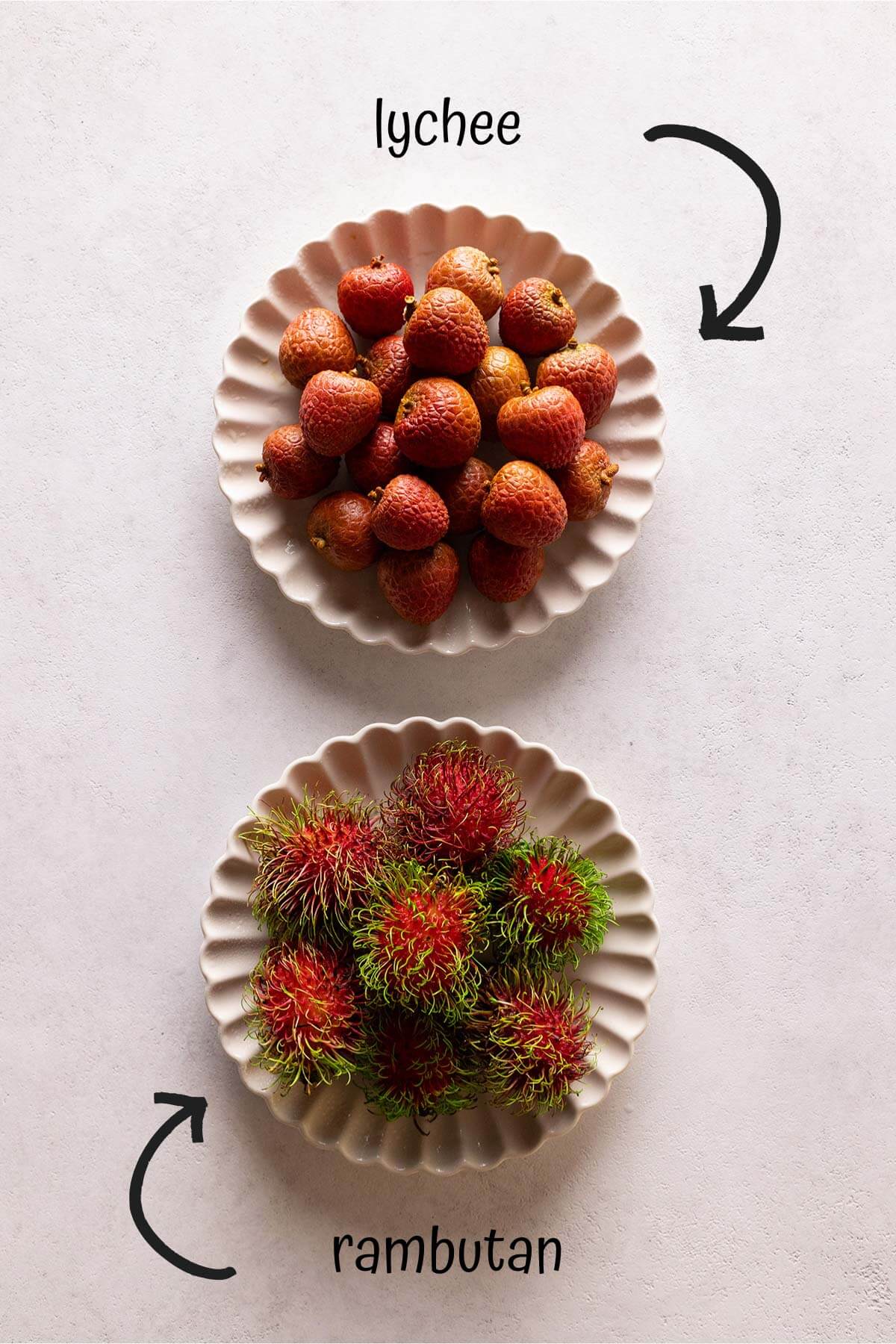
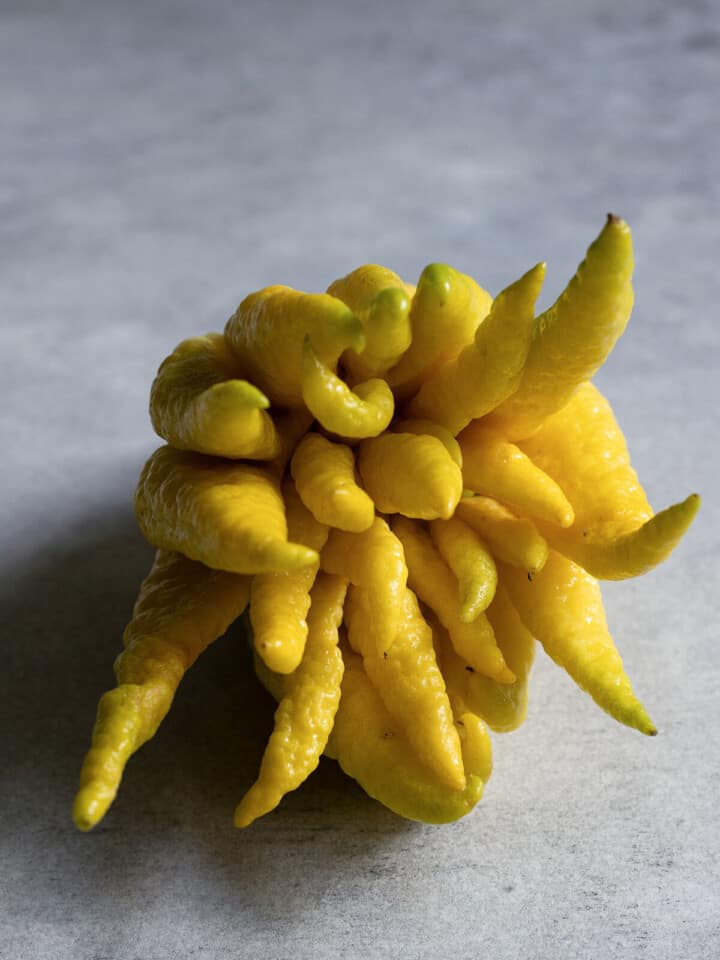
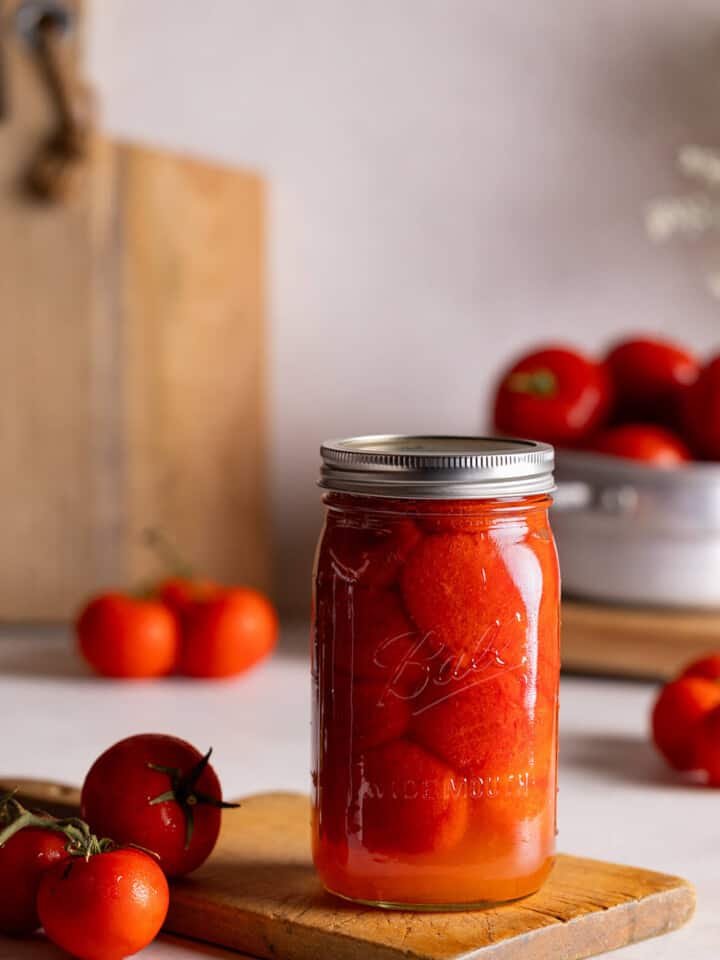
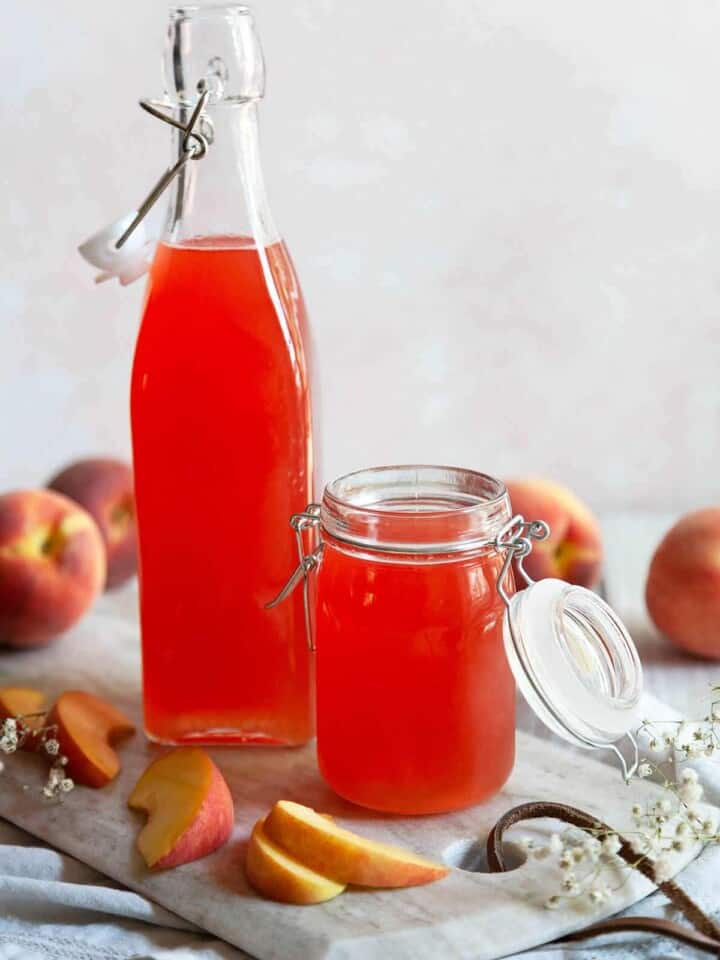
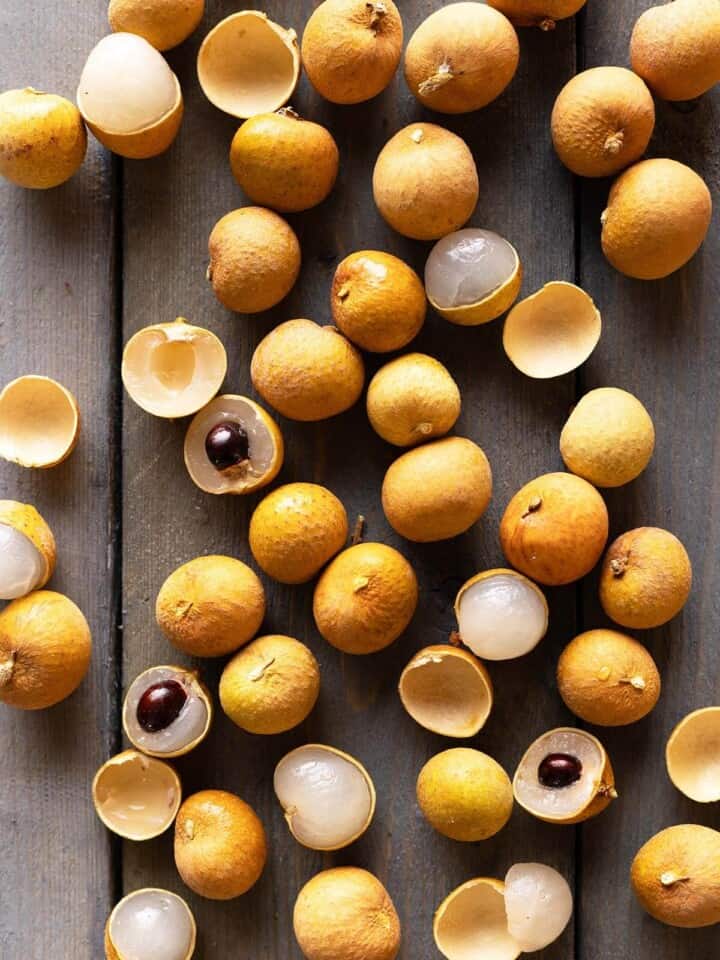
2pots2cook
Thank you so much for your longan, rambutan, snake fruit and this educational posts. Some of them are known to us but rambutan is completely unknown...... still so much to learn, of course...
Kelly
While in Dubai I come across so many fruits that I haven't seen before. It's fun giving them a try! Thanks Davorka!